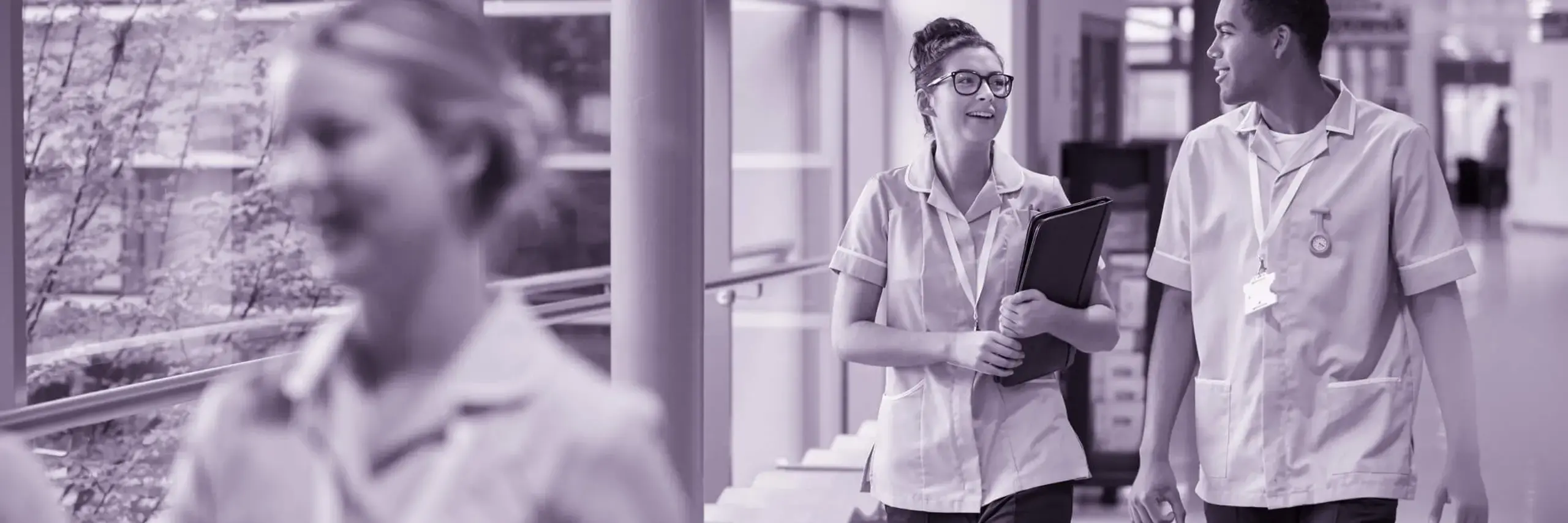Main content
Fixing fitness to practise: a model for the future?
05 Sep 2018
In our third (and final) blog looking at fitness to practise, we move from the evolutionary approach in our second blog to a revolutionary one. If we could design the fitness to practise process from scratch: what would it look like?
In the final blog of this series about fitness to practise, we will be thinking about what kind of system we would design if we were starting with a blank sheet of paper.
As we outlined in the first blog in this series, reform of fitness to practise is long overdue. The current process has evolved from a system of self-regulation by the professions themselves to a set of outdated and piecemeal legislation which:
- leads to varied outcomes across the regulators
- is confusing and complex to patients and the public, as well as professionals and employers
- is inherently adversarial/combative due to the influence of criminal law which can be stressful for all parties and may not lead to a satisfactory resolution
- is lengthy and expensive – some cases can take several years from the initial complaint to the final panel decision and require significant resource
Just to recap, in our last blog we explored some of the ways in which it might be possible to improve the current system within existing legislation. This included:
- clearer and more consistent use of thresholds to ensure that the right cases are taken forward for investigation at the early stages of fitness to practise
- safe and transparent use of consensual disposal to deal with more cases without taking them all the way to a hearing
Although the concept of the public hearing has been an established feature of fitness to practise for some time, the time may be ripe to ask: ‘Is this really the best way to resolve all cases?’
A painful process – for the public and the professionals
As research we commissioned demonstrates, the public, as well as professionals themselves, find hearings stressful and are often dissatisfied with the outcomes. Our research highlighted strong support for different methods of disposing of cases, but also expressed some concerns about maintaining the rigour of investigations, ensuring sanctions were not overly lenient, maintaining transparency and making sure the complainant’s voice is heard in the process.
Is the answer therefore to keep hearings to a minimum and make greater use of consensual disposal mechanisms?
Reforming fitness to practise using right-touch regulation
In Right-touch reform we have outlined what we see as the purpose of fitness to practise.
‘Fitness to practise outcomes should fulfil the three limbs of public protection by means of meaningful remediation where possible, and degrees of restrictions on practice where not.’
We also laid out principles to guide reform of fitness to practise:
- Use fitness to practise measures only when necessary: issues should be resolved in the place where they occur or by other bodies who are best placed to deal with them, unless they meet the regulator’s threshold for acceptance.
- Link thresholds for accepting concerns to the professional code: it should be clear to registrants, employers, patients and service users when a concern needs to be referred to the regulator. This should be based on the code that sets out what is expected of a registrant.
- Seek early resolution and remediation where appropriate: the purpose of fitness to practise is not to punish. This has implications for the way in which cases are disposed of, and for the design of the fitness to practise process, for example the role of formal adjudication would be diminished.
- Separate investigation and decision-making, including adjudication: the current structures limit the extent to which this is possible for all the regulators, but it remains an important basic principle.
- Ensure accountability, transparency, and consistency: this applies both to policy and to practice; there should be external scrutiny of all decisions to use fitness to practise measures; there should be options to review decisions to close cases at the major decision-making points in the process. There are good reasons why outcomes may be different, but any reforms should strive for greater consistency of process and thresholds where possible.
Our final and more radical principle which would not be possible under current legislation is:
- Use formal adjudication only when the registrant disputes the case: only when there is a dispute between the regulator and the registrant (on material facts, the decision that regulatory action is needed, or the specific action recommended by the regulator) is it necessary to use an independent means of adjudicating.
Do we really need the ‘my day in court’ approach to ensure transparency?
There are, of course, specific benefits to hearing a case in public. Arguments have generally supported the use of public hearings as a way of ensuring maximum transparency and maintaining public confidence in the process as complainants may have a legitimate expectation that their complaint will be heard publicly. Furthermore, as highlighted previously, all regulators are bound by an overarching objective to protect the public and what are known as the three ‘limbs’ of public protection:
- Protecting the public from harm
- Maintaining public confidence in the profession
- Declaring and upholding professional standards.
Current case law suggests that for certain cases, where there is a strong public interest element, it is necessary to retain the public hearing to maintain public confidence. However, we have suggested that the time may be ripe to reconsider this assumption.
Whilst maintaining the transparency, accountability, consistency, and fairness of the fitness to practise process is essential, it is the outcomes (including publication of relevant sanctions) which are primarily responsible for protecting the public. We are not aware of any evidence which suggests that public hearings are the best way of maintaining public confidence or of upholding professional standards. Indeed the research we have mentioned into alternatives to hearings suggests that the public would be open to other approaches.
What might a new model for fitness to practise look like?
We have proposed a model designed to encourage full co-operation from the registrant from the outset, and to deploy the minimum regulatory force to achieve the desired result. Our proposed approach is outlined as follows:
- a distinction between remediable and non-remediable cases
- early agreed outcomes (including remediation) would be encouraged for all cases, except where the registrant did not accept the facts, the decision to take action, or the outcome proposed by the regulator, and
- only cases where there was such a dispute would be dealt with through formal adjudication
- all decisions relating to cases that were pursued by the regulator post-investigation to be subject to scrutiny by us, and which we could appeal if we felt a decision did not protect the public.
Essentially, fitness to practise would operate two different processes:
- Accepted outcome with the potential for remediation for cases where the facts, decision to take action, and proposed outcome were accepted by the registrant
- Referral to adjudication for cases where the findings and outcome were not accepted by the registrant and default to this route if, at any point, the registrant did not comply with the process, or chose to dispute the facts of the case.
This approach bears some similarities to the process already operated by the Scottish Social Services Council. It is also the approach that the new regulator, Social Work England, will operate once it takes over the regulation of social workers in England, which will be known as ‘accepted outcome’.
Fact-finding rather than case-building
There is more detail on this proposed approach in Right-touch reform but essentially it is intended to encourage investigations to take on a more inquiring nature, to establish the facts rather than ‘build a case’ against a registrant. It will also allow consideration at an early stage of whether a registrant has remediated their failings and therefore whether there is an opportunity for a case to be closed with no further action or whether there is a need for further regulatory action in the public interest. It should encourage regulators to work together to establish the facts when there are cases that include different professions.
There are clearly a number of potential risks and issues to address with such an approach. For example, the importance of a thorough investigation ahead of a decision about how the case should be disposed of, the additional need for transparency and accountability, the importance of separating out investigation and adjudication, the extra responsibility placed on decision-makers and ensuring decision-makers are of sufficient experience and seniority.
There is also further research needed to ensure that such an approach can satisfy the three limbs of public protection. With greater focus placed on remediation, it would be necessary to get further clarity on what type of cases are capable of being remediated and what constitutes effective remediation. We are planning to commission research to check if moving decision-making from a public to a private forum is likely to have any significant effect on the psychology of decision-makers and how decisions are made.
There also needs to be further assessment on how we ensure that insight by the registrant can be fully considered by decision-makers in the absence of a public hearing and how the experience of complainants can be fully incorporated into the process. This might happen through the opportunity to provide an ‘impact statement’ or similar. There would also be merit in exploring what role technology could play in providing complainants, and the public, with access to information considered by decision-makers when a formal hearing is not held.
Reforming regulation as a whole (and not just fitness to practise)
This proposed approach builds on our research and thinking over the last few years as we try to ensure that the fitness to practise process is more closely aligned with its purpose – to protect the public, maintain professional standards and uphold public confidence. It also builds on feedback we have received from the regulators on their frustrations with the current system and their wish for greater flexibility to dispose of cases in different ways.
Other elements of our proposals for reform, such as a single register and licensing scheme for professionals and common code or shared statement of professional practice would support our vision for radical reform of fitness to practise.
We must note that such an approach would place a large amount of responsibility on the regulators to ensure that the process could be operated in a sufficiently robust and transparent way. As we have highlighted, this model is not, in our view, compatible with current legislation and existing case law which supports the use of a public hearing for cases where the wider public interest is engaged.
In the meantime, we are waiting for the Government’s response to its consultation on regulatory reform. We can only hope that any proposals for change will be bold enough to aim for wholesale reform rather than piecemeal change which to date has brought about significant variations between the regulators on the scope and flexibility of powers.
We know that regulators are thinking creatively about how to improve within the current legal framework and we welcome innovation where possible. We urge the regulators to work together to develop shared solutions to common challenges, to promote a more consistent approach and to ensure that public protection continues to be maintained.
Related material
- Read blog 1 and 2 in this three-part series
- Read a summary of our thinking about how fitness to practise processes could be reformed
- Right-touch reform
- Alternatives to final panel hearings for fitness to practise cases - the public perspective
- Our key statistics for fitness to practise for 2017/18


